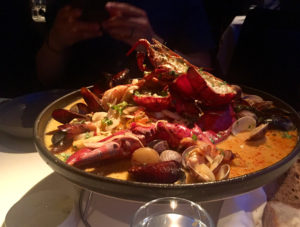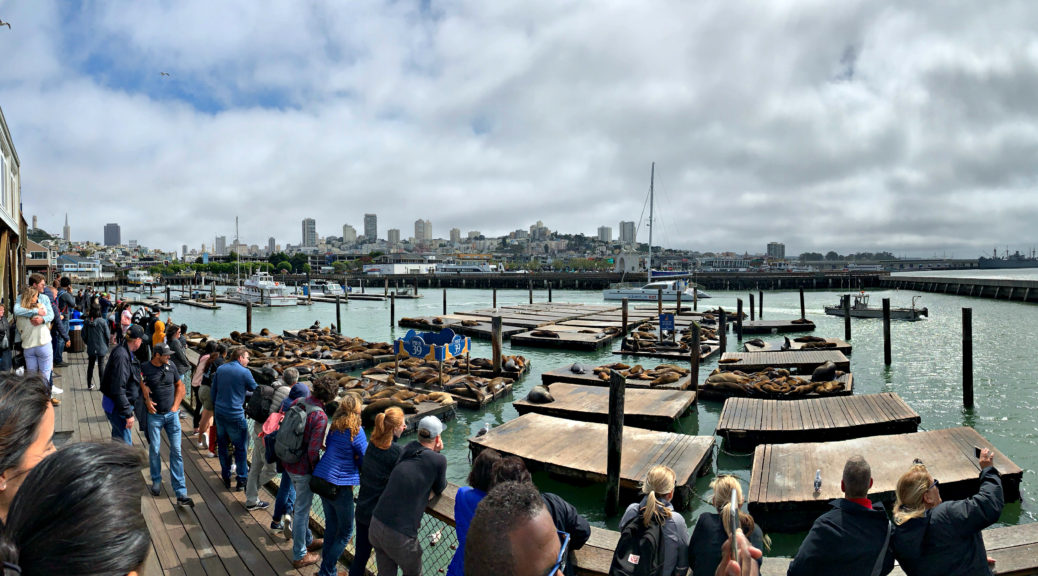
San Francisco: Embarcadero, Cable Cars and Chinatown
We visited San Francisco in 2008 and just returned from visiting again. We stayed at a hotel near the Embarcadero for both of our visits. Prior to the 1989 earthquake, a double-decker highway, the Embarcadero Freeway, connected the Golden Gate Bridge and Bay Bridge, but it blocked the view of much of the shoreline. There were people opposed to the freeway before it was ever completed and others who liked the convenience it provided. The 1989 earthquake damaged the freeway and provided the momentum to demolish it, creating the Embarcadero as we see it today. It has become a popular tourist attraction featuring the Ferry Building, shops, restaurants and of course docks where tourists can board boats for excursions. The pictures below show the “before and after” views.
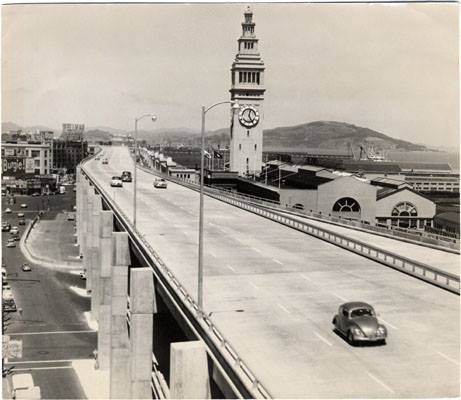
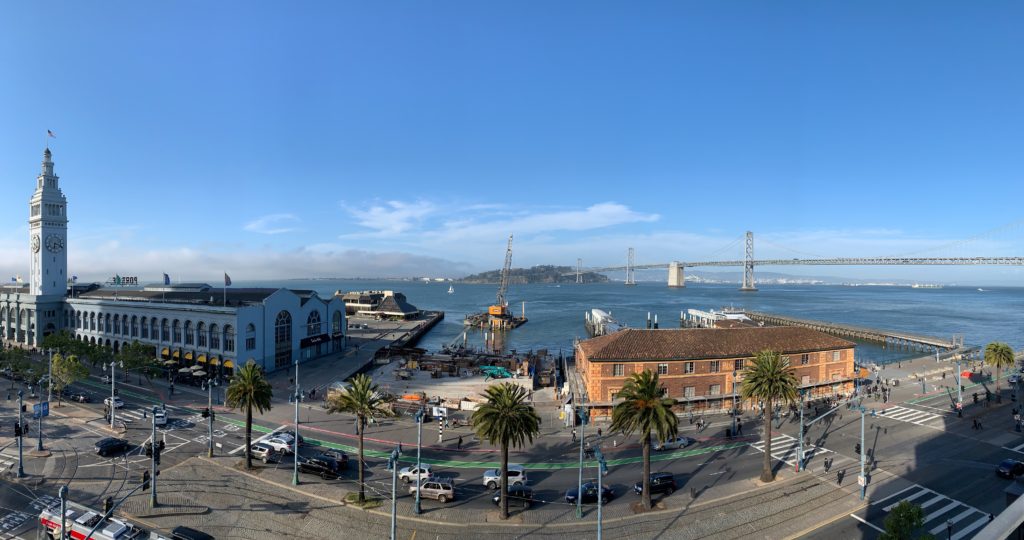

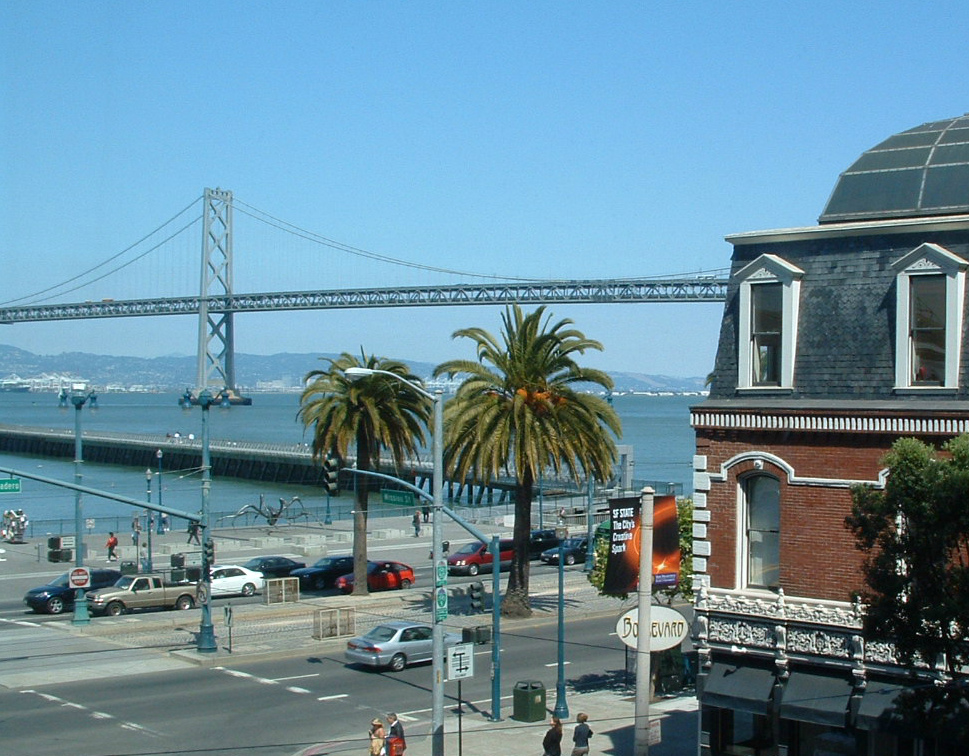
These are more pictures taken in the Embarcadero area. The first two pictures were taken inside the Ferry Building. There are restaurants and shops where you can purchase such things as cheese, olive oil, wine, bakery goods and fresh produce. The next two pictures are of the clock tower at the Ferry Building, one taken at night from our hotel window. After the Ferry Building are two pictures of Pier Seven and one of the Bay Bridge, both taken just after sunrise. The picture above the title for this post was taken at Pier 39, a popular spot for sea lions to sun themselves and for tourists to gather. This picture was taken by my son, Brian.
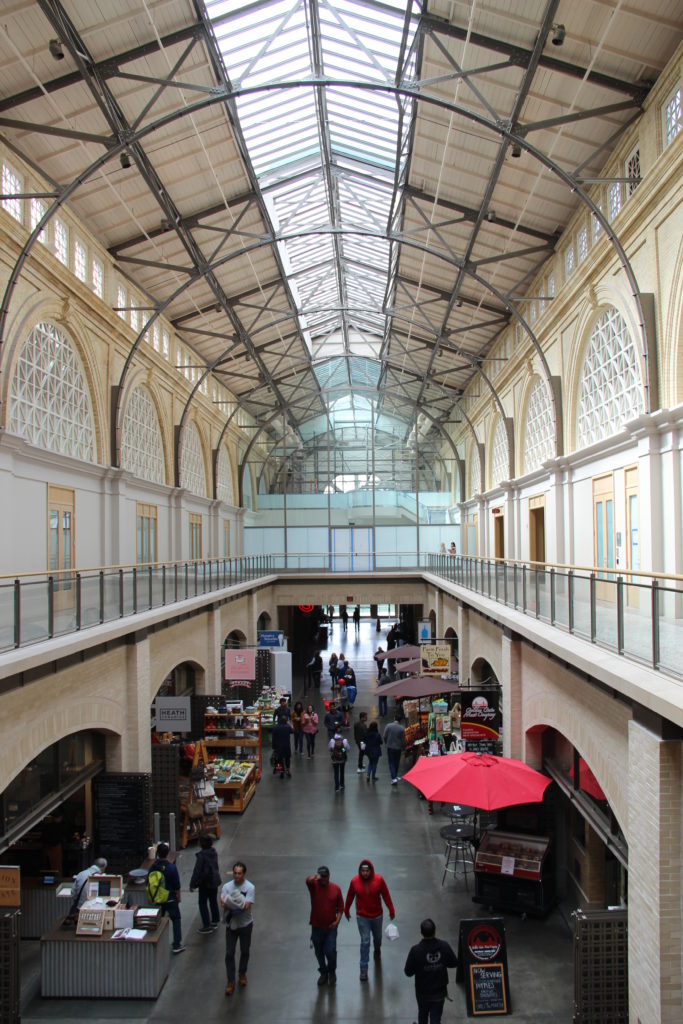



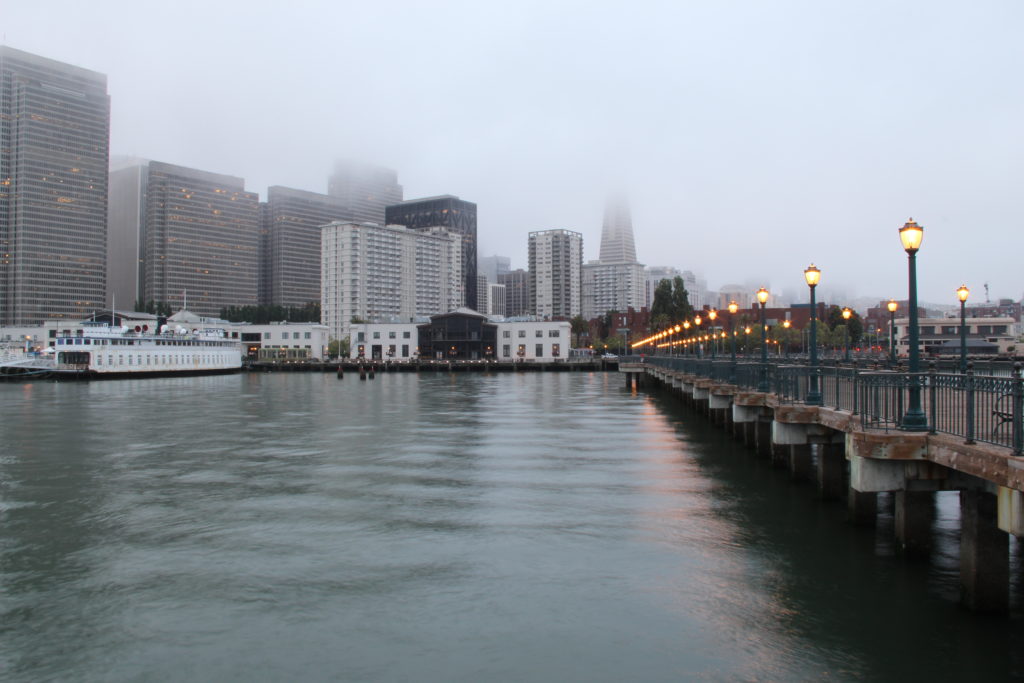


The first picture below is of a San Francisco streetcar. Streetcars have an onboard motor and draw power from overhead wires via a trolley pole. We saw many of these during our visit. Of course San Francisco is better known for its cable cars, which are the next pictures in this section. Cable cars also run on tracks, but there is a slot between them where a cable runs continuously at about nine miles per hour. The cables are on huge winding wheels that are turned by an electric motor at a central powerhouse. Cable cars themselves do not have motors. Rather, when the driver wants to move forward, he grabs the cable with a grip that pulls the cable car. The grip is released in order to stop. Cable cars were invented in 1873 in order to transport people on San Francisco’s steep hills. Today, San Francisco is the only city in the world to still operate cable cars. The last picture was taken looking out the front of the cable car as we slowly made our way up the hilly street.



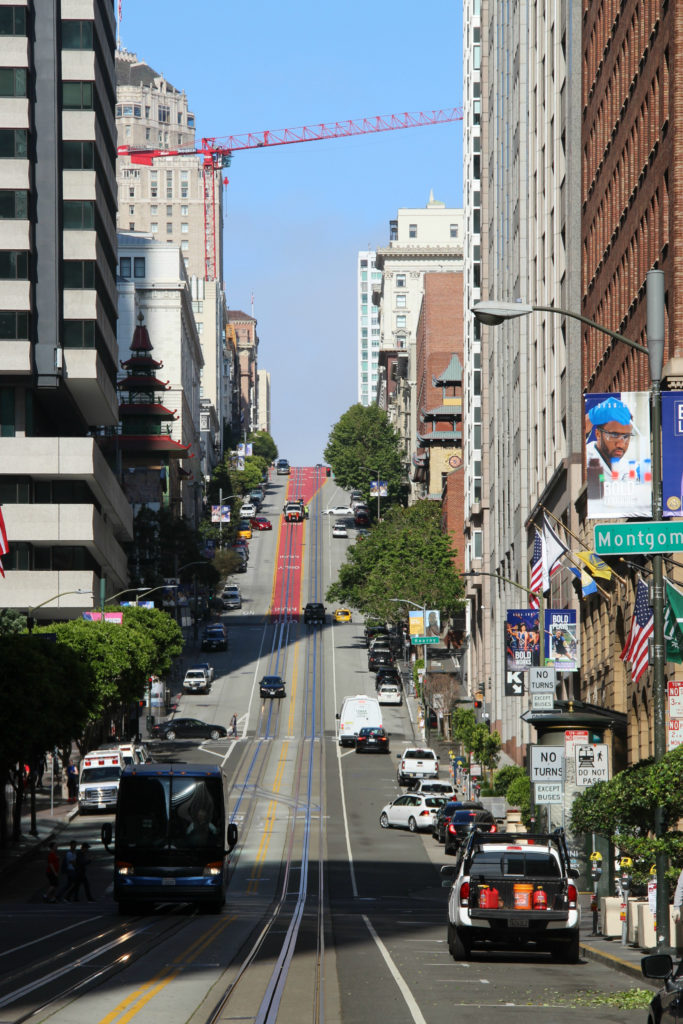
San Francisco’s Chinatown was the first Chinatown established in North America and is still the largest Chinese community outside of Asia. The Chinese faced considerable discrimination. San Francisco passed laws in 1870 which restricted the opportunities of the Chinese to work and where they could live. Congress passed the Chinese Exclusion Act in 1892 which prohibited Chinese laborers from entering the United States and also prevented any laborers already in the country from becoming naturalized citizens. It was felt that admitting Chinese laborers was a detriment to the “good order” of some communities. The Angel Island Immigration Center opened in 1910. Chinese immigrants spent weeks to months in detention while being interrogated. The Chinese Exclusion Act was eventually repealed in 1943.
A pagoda-shaped street light and one of the festive streets can be seen in the first two pictures below. The third picture is of the Hop Sing Tong Building. Tongs, which are halls or gathering places, were established in the 1870’s to assist Chinese immigrants in their search for housing and work. When they needed money to provide services to their members, they engaged in criminal activity such as drugs, prostitution and gambling. The different tongs operated like gangs and were violent toward each other. Today they are described as benevolent organizations that provide services such as counseling for immigrants, Chinese school and English classes.
The fourth and fifth pictures show some of the street art we saw while walking through Chinatown. The first is Crouching Tiger – Hidden Dragon. It was made by artists from the Dragon School near Oakland. They teach children about street art. The second one can be found on Grant Avenue near Clay Street and includes replicas of the terra cotta warriors.
There are several alleyways in Chinatown, the oldest being Ross Alley where we found the Golden Gate Fortune Cookie Factory. The last two pictures were taken at the fortune cookie factory where we saw two ladies making fortune cookies. It s a very small “factory” (at least the public part) with probably space for only ten tourists at a time. There are samples and you can also write messages on a slip of paper and have them inserted into a fortune cookie. To make a fortune cookie, a flat cookie is first taken off a hot press. The paper with the message is put on one side and then the cookie is quickly folded into the shape of a fortune cookie before the cookie hardens.

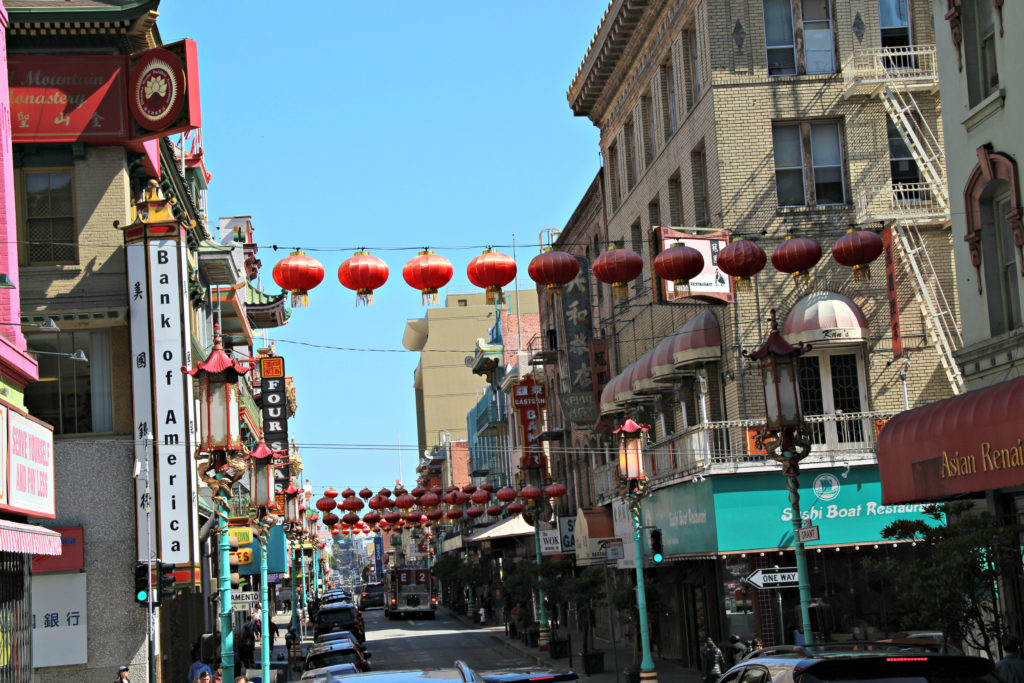
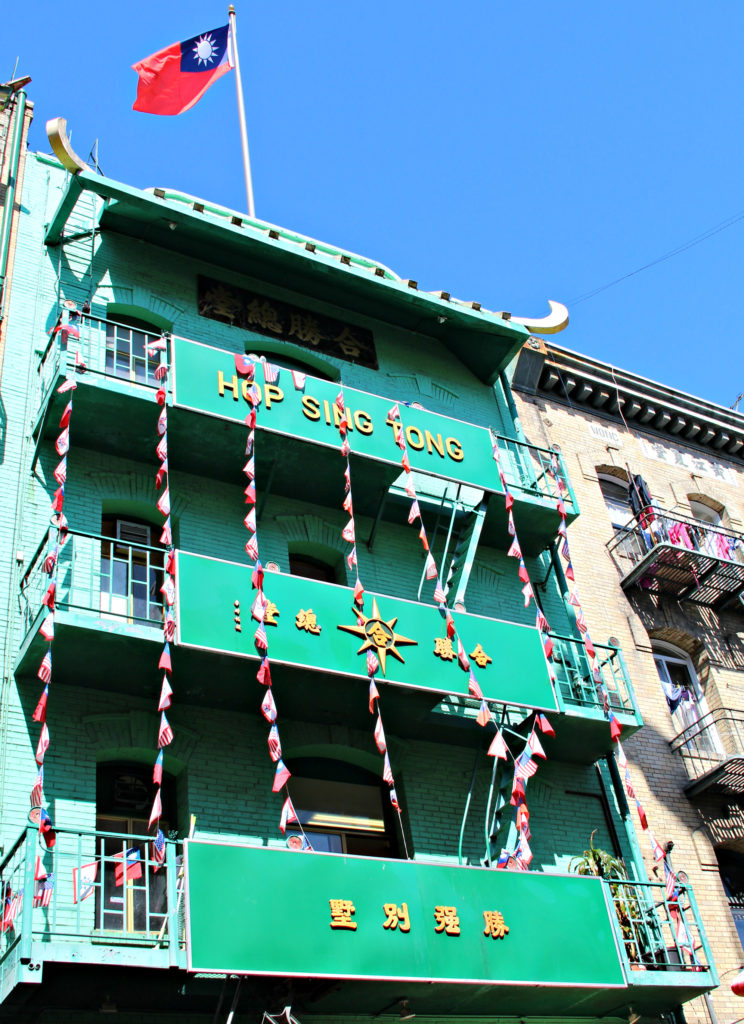
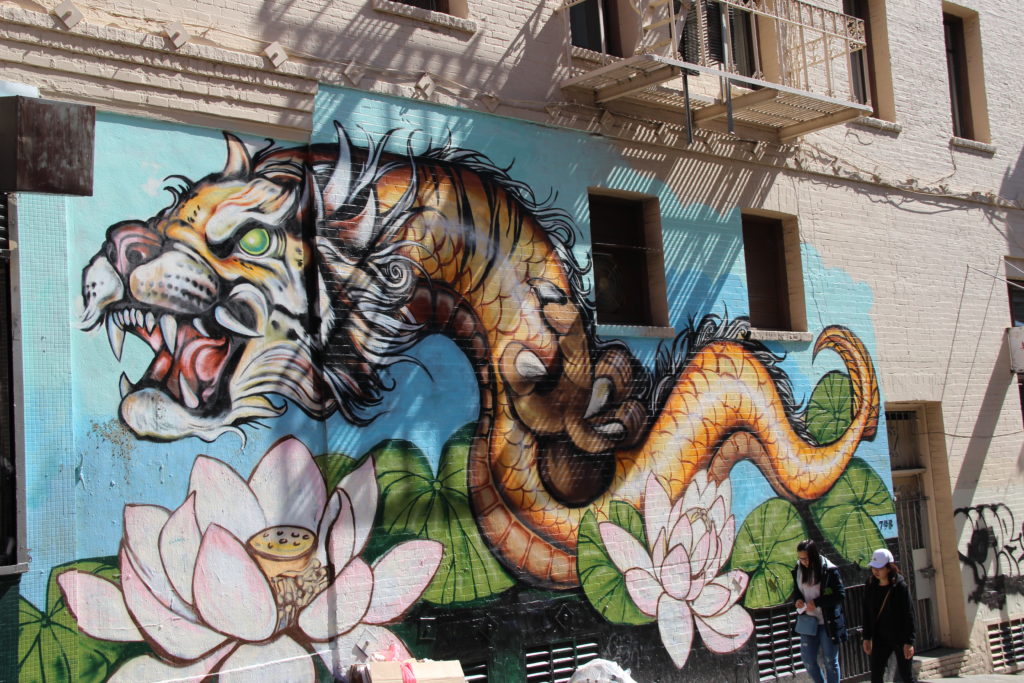
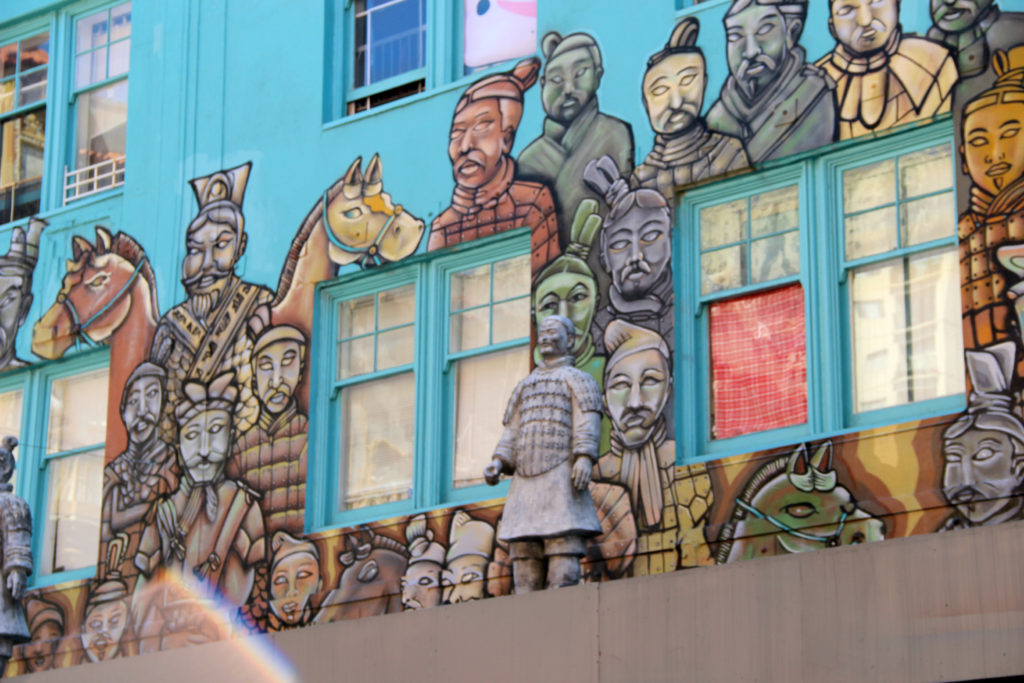



When we were in San Francisco in 2008, we only drove through Chinatown on a Hop On – Hop Off bus. We were glad we explored it on foot this time. It is a very interesting community. It was part of a tour we took through “Walks.” I also want to share two restaurants we especially enjoyed. One was the Boulevard. We ate at this restaurant in 2008 and made reservations so we could go again on this trip. We also went to the Waterbar, a restaurant our son and daughter-in-law found. They had a seafood platter which is pictured below. It was a great experience with excellent food and service. Both restaurants are on the Embarcadero.
